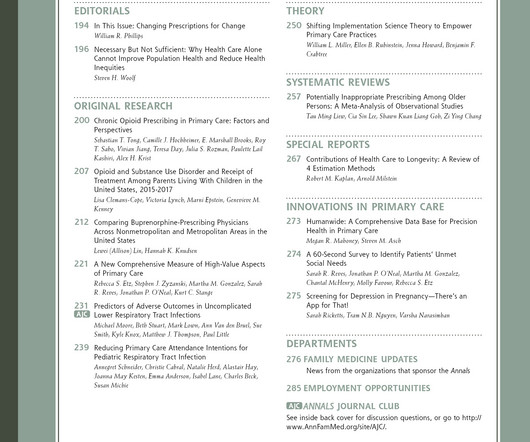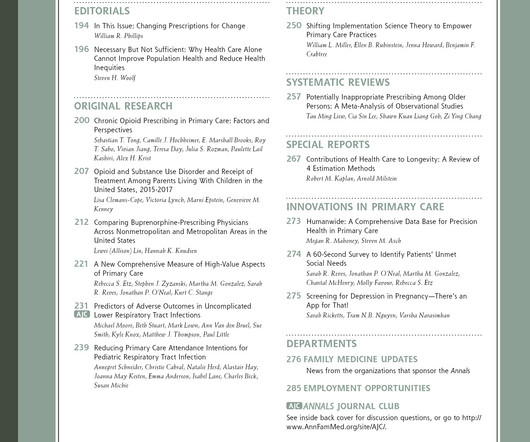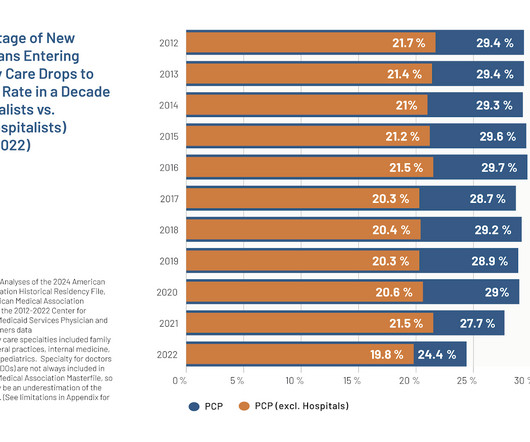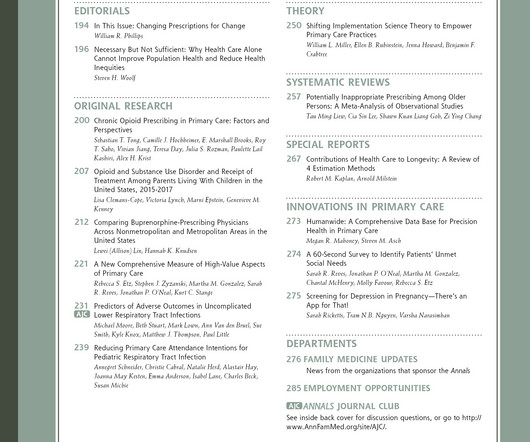Understanding Primary Care Inbox Management: A Qualitative Study of Patient Message Prioritization and Inbox Workflow [Practice management and organization]
Annals of Family Medicine
NOVEMBER 20, 2024
The increased inbox burden has particularly impacted primary care physicians. Objective Our goal was to examine how message prioritization (as distinct from categorization) occurs in primary care, and to understand the approaches primary care clinicians deployed for managing their inbox workflows.
















Let's personalize your content